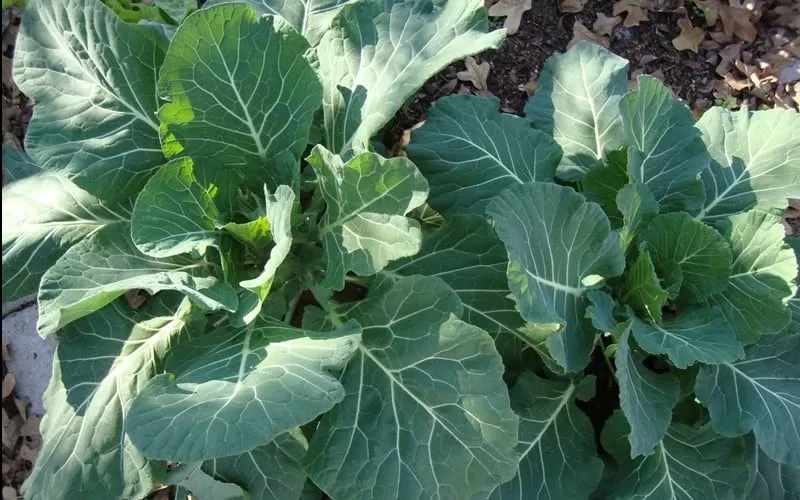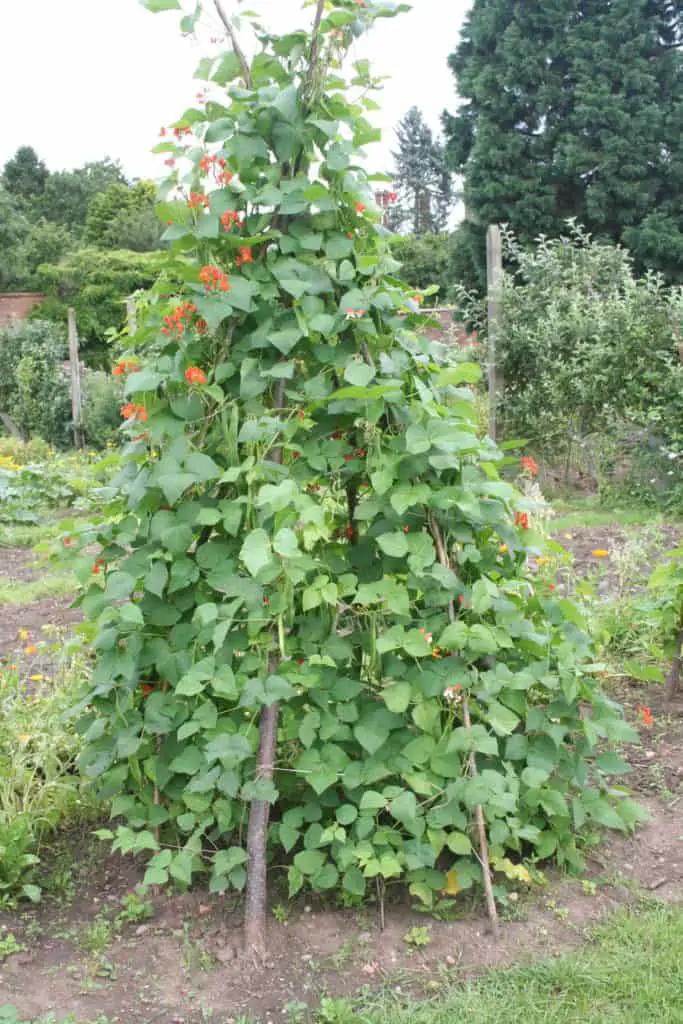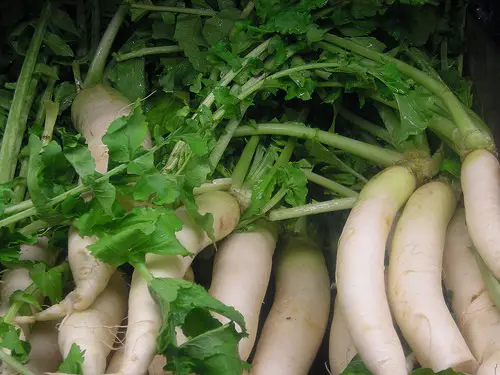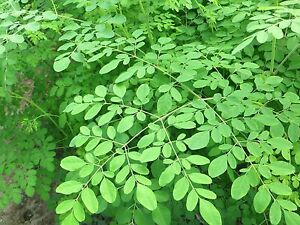Starting to grow your own food is no easy task, especially if you’re new at it. You have to prepare the soil, start the seeds, set up irrigation, transplant your seedlings at the right time, keep them free from pests. It’s amazing we even eat at all!
It doesn’t have to be that difficult. In fact, we are blessed by living in the wet tropics. We have tons of edible perennials that can provide nutrient dense, delicious food with very little work in a short amount of time. What isn’t there to like?
If you are new to gardening, you should start by planting a couple perennial edibles first. You’ll find easy success which will enable you to have more confidence as you begin to grow vegetables that may be a little harder to grow.
I have compiled a list of the 15 fastest growing food crops for the wet tropics. These plants will kick your food production into high gear. Focus a little of your time on these and you’ll be harvesting abundance in a few short months.
Related: When starting any plant either by seed or cutting, I like to start them off in their own pots before transplanting them out. These fabric pots have been my go to for some of the larger plants that I come across.
20-PACK 1 GALLON FABRIC GROW BAGS
Top 15 Easiest Vegetables to Grow for the Wet Tropics

- Perennial Collards – I love growing collards in Hawai’i. Collards are a short lived perennial that are so easy to grow. I usually directly seed them into nicely prepared soil and they sprout right up. Within 2 months time from seeding the plants you should be able to see your first harvests.
Typically a cold hardy annual in temperate climates, collards are a perennial in the tropics. Problem is, they only go to seed in cold climates. So for those of us in the tropics, we have to keep buying seed if we want fresh stock.
They can be propagated by cutting though. I found this great article on propagating collards by cutting from Kumu ‘Aina Farm. Learning to propagate your own collards without having to buy seed is a great way to build more resiliency into the system.
My free ranging chickens seem to avoid decimating collards, which is nice of them, but I can’t say the same for my kale. The only thing I have to look after with the collards is the presence of cabbage worms. They can really do some damage. I visit my collards daily and pick the worms off and give them to my chickens. - Aji Dulce Sweet Pepper – I tend to have trouble growing sweet bell peppers at my place, but when I found Aji Dulce Sweet Peppers everything changed. Not only is the plant perennial, it thrives at my place. I finally have my own sweet peppers!!
It is said that the seeds from a ripe Aji Dulce Pepper can be directly sown into the soil when it is at least 55 degrees. I started mine in pots with peat moss, little compost and black cinder. If you have an area where dandelions or plantain (not the banana kind) grow, then conditions are perfect for the Aji Dulce Sweet Pepper.
The plant grows to about 2 feet tall and begins to produce in as little as 4 months!!

- Chayote – These are one of the first plants I grew on my property, but mostly by accident. I picked up a few chayotes at the farmers market and somehow one must’ve fallen out but within a couple months I had this thick vine taking over my shed.
I trained the vine to grow on a sturdy trellis instead and was blessed with plenty of chayote for a few years before we had it removed.
Chayote seem to thrive in the wet tropics, all you have to do is pick a spot with fertile soil, preferably in full sun with a sturdy structure for it to climb. Drop the whole fruit on the ground and wait, or partially bury for quicker results. Either way, it’s easy.
Within 3-4 months you should begin to harvest your own chayote.
Related: Can Comfrey Grow In The Tropics? - Chaya – I planted Chaya at my place last year and it has become a welcome addition of a source of greens for our meals. AKA Tree Spinach, Chaya grows as a 6’-8’ shrub with edible leaves that are great for cooking.
I propagated the plant from a friend’s bush by taking a woody cutting. It has been a little slow to take off, but has really taken off in its second year. I prune it pretty heavily now and it seems to really respond, sending up fast bursts of succulent new growth that provide the best leaves for cooking.
This may not be the fastest growing plant, but once established it provides plenty. You only need one plant for the family

.
- Callaloo – This is a tropical plant widely grown across the caribbean. It is also known as green leaf Amaranth. It grows very easily from seed and may already be a weed on your property.
Dropping Callaloo seed in area of the garden that has some bare soil will normally do the trick, but you can also lightly cover it with soil. Within about 2 months you should begin to harvest leaves from the plant and continue to harvest well into the future.
If you let the plant mature and go to seed, you can save the seed to replant or eat. It is labor intensive, but we made an amaranth porridge from seed we saved once and it tasted amazing. But we only did it once.

- Lualualei Pole Bean – Protein sources in the plant world can be hard to come by, but that’s where the bean comes in. The Lualualei Pole Bean is a rust resistant variety of bean that was developed for Hawai’i.
This bean gets planted just like any other pole bean. Direct seed in early spring in well draining soil. Be sure to add something for it to climb on.
Within 60 days you should be harvesting a bounty of pole beans that are not only easy to grow, but taste good as well. If you are vegetarian, this would be a good bean to supplement protein into your diet. - Bele – Long considered the most nutritious plant in all of Oceania, every Hawaiian garden should be planting Bele. If you are new to gardening and consider yourself a black thumb, then this is a great plant to build your growing confidence.
All one has to do to propagate bele is to cut a branch from a parent plant and stick that cutting into the ground. That’s it! Almost any soil quality will do, even lava rock. I once planted Bele by sticking a cutting between 2 lava rocks, and it grew!
Traditionally, the leaves are used in cooking as a steamed or boiled leafy green, but it can also be stir fried. The consistency is a little like Okra, turning gelatinous when cooked.
I like it in soup or wrapped around meat and boiled, but have not quite brought myself to really enjoy it stir fried. I just can’t get over the gelatinous properties.
- Thai Eggplant – Similar to traditional eggplant, Thai Eggplant is shaped like an oversized golf ball. It grows very easily in Hawai’i by direct seed or transplant. It can overwinter and become a short lived perennial in the tropics.
Ensure that you have well draining soil and you will have conditions suitable for growing eggplant. The fruits of the eggplant are best harvested when young and tender. When they are a little older the fruit gets a little too tough and bitter for pleasant eating.
If you love eggplant and are looking for an easy variety to grow in Hawai’i, the Thai eggplant is one worth considering.

- Collumnar Basil – This is a great basil if you don’t have a lot of space. It’s still great if you have tons. Columnar basil can grow up to 3’ tall but only gets as much as 18” wide! Just one plant and you’re looking at a lot of basil, unless you’re a Pesto lover.
You can grow it from seed, but I like taking semi wooding cuttings on 2nd year growth and root those out to make new plants. A simple bed of sand and some misters and you’re almost guaranteed rooted cuttings.
This basil is used just like sweet basil so it goes with any Italian or Mediterranean dish that you might be cooking up. In Hawai’i, it grows as a perennial. All you have to do is fertilize it every now and then with some rich compost and it should be pumping out leaves for years to come. - Culantro – I’ve never had much luck growing cilantro in Hawai’i. It just tends to bolt way too quickly to really be worth it, at least in my garden. Then I stumbled upon culantro and never wanted to bother with cilantro again.
It tastes just like cilantro. I cannot tell the difference. Only thing is that the leaves are a little tougher than cilantro, better used as a flavoring for soup than a garnish on top of tacos.
But it grows well. I just uncovered some naturalizing in a part of my yard where I never had culantro growing. It seems just as prolific as dandelion, plantain or other similar weeds you find in a grassy lawn.
It self seeds very easily given the right conditions and will grow for 3 or 4 years before it is replaced by dozen more seedlings. It’s a flavor enhancer worth adding into your garden.

- Daikon – Along with collards, daikon was one of my main early crops when I was starting my food forest. Before my fruit trees matured, I had a lot of open ground where I focused on growing annuals. Daikons grew prolifically.
Pop a seed ½” into the soil and you will find a huge Daikon root in its place less than two months later. Daikon roots are great at breaking up hard ground and preparing the soil for future crops.
The look like a huge white carrot but taste more like a radish. Very popular in Asian cultures, you will most often find Daikon pickled. Little wonder because it can be pretty hard to get through a single daikon root before it goes bad. They can get huge!
- Cherry Tomato – In some parts of Hawai’i cherry tomatoes grow like weeds, in other spots you are going to struggle. I lived at a farm in lower puna where it seemed like all you needed was someone to eat a cherry tomato near some black cinder and you’d have fruit growing there in 2 months.
I now live a little higher up in elevation where things get a little wetter and I can’t seem to grow a tomato for the life of me. Whenever I do find success, it’s a cherry tomato growing close to the house where the roof overhang blocks a bit of the rain.
Cherry tomatoes are your best bet for getting tomatoes in Hawai’i. If you have a dedicated grow house that is protected from rain and bugs, you may get larger slicing tomatoes. Even still, better success is had the closer to the ocean you go.
Related: 4 Easy Ways To Grow Mushrooms In The Tropics

- Moringa – The leaves from the Moringa tree are filled with a variety of vitamins and minerals that are essential to any diet. They are a rich protein source as well. A healthy diet is virtually assured with the addition of moringa leaves into the daily meals.
While not the fastest grower on the list, in just under 8 months from planting a cutting, you should be harvesting a decent amount of greens long into the future. It is best to prune the plant regularly to ensure the growth of young succulent leaves. This would keep the plant as a shrub, but it can grow into a tree if left unattended.
Moringa also does well when planted by seed. It’s almost as if you have to try NOT to grow the plant. Moringa should definitely be on the list for quick plants to grow in the tropics. - Pigeon Pea – A valuable source of plant based protein, Pigeon Pea is a nitrogen fixing shrub that is a great companion to any fruit tree or vegetable garden.
Pigeon Peas grow very well from cutting and by seed. The respond to constant pruning to provide mulch material for other crops, but when left to go to seed you have a highly nutritious pea that is widely consumed throughout the tropics.
I think Pigeon Pea is a beautiful plant that is a great addition to any home garden. It is a perfect Permaculture plant, meaning that it provides many functions for the home garden. - Okinawa Spinach – A low growing perennial ground cover, Okinawa Spinach has edible leaves that are a great replacement for annual spinach that prefers cooler climates.
I have always been a fan of Okinawa Spinach. I like the fact that it is grown as a ground cover, it suppresses weeds for me. Also, with very little work on my part, I have a constant source of greens. I have never run out of Okinawa Spinach.
It is very easy to grow. Take a cutting from an established plant, preferably with some roots on it and stick it in the ground. It’s that easy.
Where Are the Starchy Crops?
You may notice that I left sweet potatoes, taro, bananas, etc off the list. The starchy root crops. After all, these will be the food crops that will be the main source of calories. But they come with some struggle.
Without a fence, wild pigs will destroy your root crops. That’s either a good thing or a bad thing. Yes your root crops get destroyed by pigs, but now you have pigs! Either way you have a food resource.
Regardless, one day you will want to focus on growing these starchy food crops. But make sure you create the right conditions for them to thrive, otherwise you will be working hard to obtain a yield.
These crops also tend to take a little longer to yield, but they are very easy to grow. So once you get the plants growing from the top 15, begin to start planting these starchy crops to ensure food security on your property.
If you want to learn more about growing sweet potatoes, visit this article here.
Start Your Gardens
Whatever your reason to begin to grow your own food, congratulate yourself on making it this far. After reading this article, you now know what you should be growing first. Now make it happen.
Prepare some garden beds. Build soil and get a good foundation for your plants ready before you actually gather up your plant material. You can learn more about building your own soil in Hawai’i by checking out this article.
By the time you get all of your plants together your soil beds should be ready. Focus on the crops on the list, that way you can start off by obtaining a yield. Then quickly move onto the starchy crops. Before long you will have a garden that will be able to take care of almost all of your food needs for very little work.
Homesteadinhawaii.com is a participant in the Amazon Services LLC Associates Program, an affiliate advertising program designed to provide a means for sites to earn advertising fees by advertising and linking to Amazon.com. This site also participates in other affiliate programs and is compensated for referring traffic and business to these companies.
